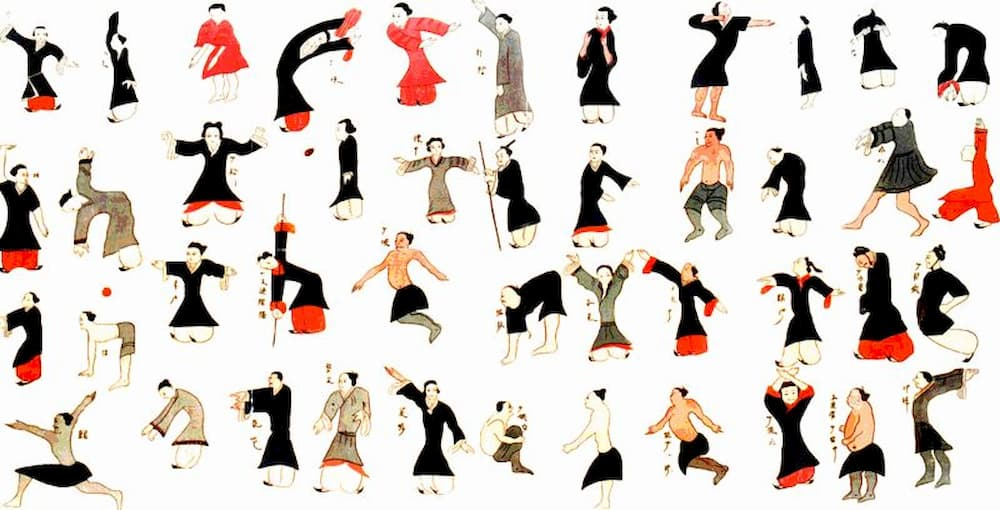
Chinese Qigong
Splendid
Chi Culture
Topic
Chinese Qigong
Qigong (a.k.a. chi kung), a quintessence of Chinese culture, has a history dating back thousands of years. It began with activities that could be practiced to promote one’s own health. It emphasized internal cultivation and the adjustment of the body, the mind, and the breath. Over its long history, different schools of qigong emerged. The most influential ones include those associated with Daoism, Buddhism, Ruism, medicine, and the martial arts (wushu). In recent years, the National General Administration of Sport of China repackaged traditional qigong practices from the various schools and created “Chinese Fitness Qigong.” This has brought qigong to a new height of global recognition.
“Chinese Fitness Qigong” is a program of traditional physical exercise that relies on the entire body; essential to it is the coordination of the breathing and mental focus. The first four sets of popular qigong forms were introduced in 2003. These include patterns that capture the essence of traditional methods—Yi jin jing (Muscle/Tendon change classic), Wu qin xi (Five animal frolics), Liu zi jue (Six healing sounds), and Ba duan jin (Eight pieces of brocade). The methods stress both theory and actual benefits for the body and mind and are suitable for all ages. The purpose of Chinese Fitness Qigong is to develop practice into a fitness activity that is widely welcomed.
In 2010, the Health Qigong Management Center (under the National General Administration of Sport of China) introduced five sets of newly compiled exercises to strengthen the development of the qigong program. Compiled by a joint group of expert practitioners and scholars, the five sets include the Dao-Yin methods from the Mawangdui excavation, Qigong Stick Health Preservation Exercises, Twelve Pieces of Brocade, The Great Dance, and Health Cultivating 12-method Dao-Yin. Each set of exercises follows the ancient methods, distilling the essence and integrating it with modern Chinese and Western medicine and sports science. Scientific research allows one to experience the actual health benefits of these exercises. Each of the five sets has its own distinctive characteristics. For example, the Twelve Pieces of Brocade is the first set of qigong exercises for health that is done while sitting; Qigong Stick Health Preservation Exercises are unique in that they are practiced using a physical apparatus.
In 2007, the Health Qigong Management Center established competition rules for Chinese Health Qigong and published them in a trial edition. It lists detailed information about the organizational structure, general rules, and scoring for competitive Chinese Health Qigong. These rules are the effective basis of qigong competition. The grading of specific forms is based on the theory of “Three Adjustments.” In other words, qigong is evaluated by its form, vitality (life energy), and spirit. The presentation score is based on a comparative evaluation at the discretion of the referees; it is divided into three grades and nine levels.
In recent years, Chinese qigong has been combined with Western medical treatment such as using it as a rehabilitation exercise for patients. Another example are the two sets of forms created by qigong experts to treat cancer patients: “targeted treatment of breast cancer qigong” and “targeted treatment of nasopharynx and larynx cancer qigong.” Training courses for cancer patients in hospitals, or related institutions, have been established to help patients to recover from their illnesses sooner.
The health benefits of qigong make it useful in physical rehabilitation. “Morning Four Steps” is a set of exercises that anyone can practice by sitting on the edge of the bed after waking up in the morning. The complete set has only four positions (opening one’s chest and clearing up one’s lungs; gently shaking and swaying to clear the fluid pathways; stretching the tendons, exhaling, and opening up one’s internal organs; and ball bouncing and moving around to make one’s four limbs strong). Three of the four positions are from “Inner grand vitality 18,” and the other comes from the “Eight Pieces of Brocade.” It is simple and easy to learn. It only takes three to five minutes to finish the complete set and is suitable for those who often complain that they have no time to exercise or for those who rush to work or school. As long as one can wake up a few minutes early, these exercises will bring them health and vitality every day.



